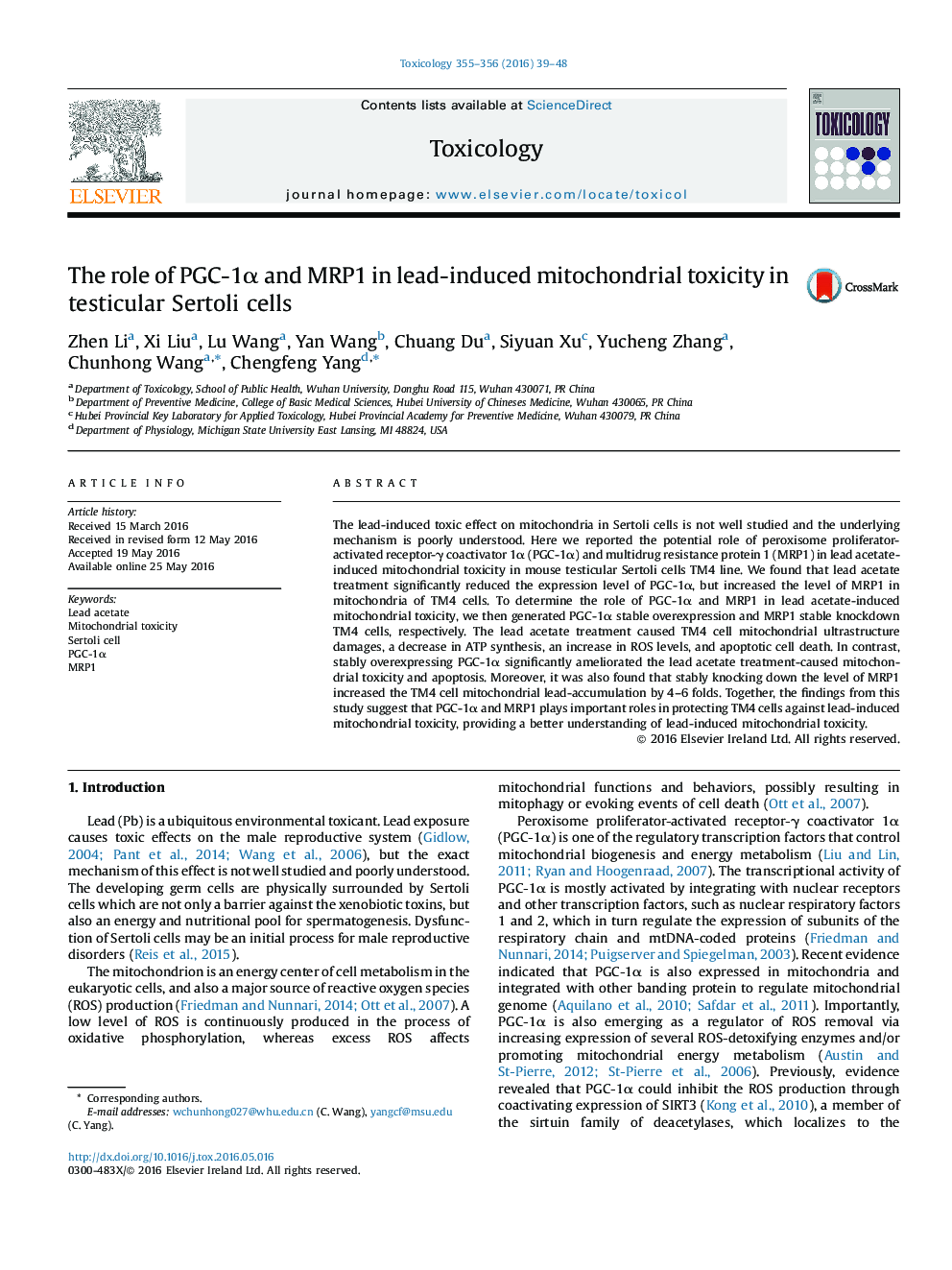| کد مقاله | کد نشریه | سال انتشار | مقاله انگلیسی | نسخه تمام متن |
|---|---|---|---|---|
| 5858932 | 1562310 | 2016 | 10 صفحه PDF | دانلود رایگان |
عنوان انگلیسی مقاله ISI
The role of PGC-1α and MRP1 in lead-induced mitochondrial toxicity in testicular Sertoli cells
دانلود مقاله + سفارش ترجمه
دانلود مقاله ISI انگلیسی
رایگان برای ایرانیان
کلمات کلیدی
موضوعات مرتبط
علوم زیستی و بیوفناوری
علوم محیط زیست
بهداشت، سم شناسی و جهش زایی
پیش نمایش صفحه اول مقاله

چکیده انگلیسی
The lead-induced toxic effect on mitochondria in Sertoli cells is not well studied and the underlying mechanism is poorly understood. Here we reported the potential role of peroxisome proliferator-activated receptor-γ coactivator 1α (PGC-1α) and multidrug resistance protein 1 (MRP1) in lead acetate-induced mitochondrial toxicity in mouse testicular Sertoli cells TM4 line. We found that lead acetate treatment significantly reduced the expression level of PGC-1α, but increased the level of MRP1 in mitochondria of TM4 cells. To determine the role of PGC-1α and MRP1 in lead acetate-induced mitochondrial toxicity, we then generated PGC-1α stable overexpression and MRP1 stable knockdown TM4 cells, respectively. The lead acetate treatment caused TM4 cell mitochondrial ultrastructure damages, a decrease in ATP synthesis, an increase in ROS levels, and apoptotic cell death. In contrast, stably overexpressing PGC-1α significantly ameliorated the lead acetate treatment-caused mitochondrial toxicity and apoptosis. Moreover, it was also found that stably knocking down the level of MRP1 increased the TM4 cell mitochondrial lead-accumulation by 4-6 folds. Together, the findings from this study suggest that PGC-1α and MRP1 plays important roles in protecting TM4 cells against lead-induced mitochondrial toxicity, providing a better understanding of lead-induced mitochondrial toxicity.
ناشر
Database: Elsevier - ScienceDirect (ساینس دایرکت)
Journal: Toxicology - Volumes 355â356, 29 April 2016, Pages 39-48
Journal: Toxicology - Volumes 355â356, 29 April 2016, Pages 39-48
نویسندگان
Zhen Li, Xi Liu, Lu Wang, Yan Wang, Chuang Du, Siyuan Xu, Yucheng Zhang, Chunhong Wang, Chengfeng Yang,